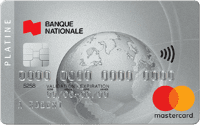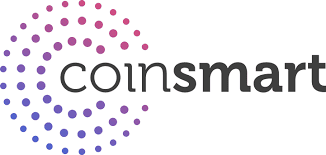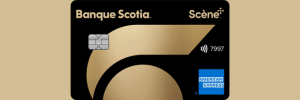
One of the core values we have at Hardbacon is that anyone can invest in the stock market. However, what fewer people realize, is that anyone can do their own taxes. This starts at age 18, where all you need to declare is income from your job, your tips (in the service industry), your tuition and medical expenses (these two you might transfer to your parents), and any social tax credits you’re eligible for. If you or your parents bought some GICs or Canada Savings Bonds, or you have an interest-earning bank account, you’ll also have a simple T5 for the interest you earned.
As a full time or salaried employee, the complexity increases only just a bit: your TFSA and RRSP. After an accumulation period, you’ll probably take advantage of the Home Buyer’s Plan or Lifelong Learning Plan. You may have some tuition credits earned this year or deferred from a prior year, and most people will be familiar with declaring the interest portion of their student loans. You’ll have paperwork for all of these figures — and you can run an expense report in your accounting program, tally them up in a spreadsheet, or simply use a calculator when you enter them into your tax return.
Following tax software is easier than it’s ever been. It’s set up as a walk-through interview for the situations that apply to you, and a very step-wise process to fill out the rest. There’s even a relatively new service called, naturally enough, “Auto-fill my return,” that downloads all your forms from the government — details that the Canada Revenue Agency and Revenu Québec received from your employer, your banks, and anyone else required to produce a T form or a Relevé for income purposes. This saves you tonnes of time.
But if you’re one of the people who struggle with taxes, chances are good that you procrastinate on it because of the fear of complications. You may also have pre-emptively offloaded this annual exercise to an accountant when you don’t have to. Fears grow in the darkness, and you’re all about becoming a fearless investor. So shine a light on it. Knowledge is confidence before it becomes power. Here’s how:
Go to Canada Post, pick up the Canada tax package and guide, and take your first stab at filling out the forms by hand. (For Quebec forms, you can pick them up at Revenu Québec offices and some branches of the Caisse Desjardins. You can also order them over the phone.)
Yes, I know. It sounds so archaic. And I still recommend that you subscribe to a tax filing program to do the final version you transmit to the government.
But as someone who first started out learning the logic of taxes by using these forms, years later when my taxes got more complicated as a sole proprietor, going back to the paper version to check my work made confusing issues really clear.
With only a little extra clarification from the Canada Revenue Agency or Revenu Québec website, you’ll understand everything you need.
Even as an investor.
If you invest within your RRSP, you’ll only be taxed on your future withdrawals. The investments in an RRSP and TFSA are sheltered. You don’t need to account for gains and losses during the tax year. If this applies to you, then remember to use up your RRSP (and TFSA) contribution room, or “bank” RRSP contributions for a future year where you might need the break – and good luck to you.
How to deal with interest, dividends and capital gains
If you have investments that are outside of an RRSP, you’ll be very familiar with the T5 slips for both Canadian and foreign interest and dividends. And if you sold any stocks or bonds, you’ll have the T5008 form for the proceeds of the sale.
A T5008 / RL-18 (Québec) income tax form
After downloading your data, this is where you need to dedicate your attention first.
If—as I learned about so close to the deadline last year, I drove my return to Revenue Quebec at 9 pm on April 30th—you accept all this information as complete without doing your part, you’ll proceed straight through to a tax return for which you owe a lot of money. This is why:
The T5008 only pertains to the proceeds of the sale, not the difference between purchase and sale. Even though your investment bank or broker knows the prices you paid, that information isn’t transmitted to the government, nor will it be downloaded to you.
Do not panic. Your brokerage sent you the transaction reports you need (or they’re available for download in your account). You can also work off your statements. You have to enter the costs of your investment purchases, and, on a separate page called “Carrying charges and Interest expenses,” also declare the management fees you paid.
The T5008 tax form for Statement of Securities Transactions is fortunately broken down into units sold. They are not consolidated. Accordingly, the tax software presents you a T5008 for every sale transaction, so you’ll be walking through it step-wise. It may feel tedious to have to enter each purchase and sale, but it’s easy to know when you’ve completed it correctly, and it keeps the accounting of it clear.
The most complicated part of filling out the T5008 is calculating the Adjusted Cost Basis (ACB) of the investments you bought and sold. It’s easier to use the FIFO method (first in, first out, meaning the profit or loss of the first sale of a stock is calculated from the first purchase you made of the stock) when you have multiple purchases and multiple sales! But the Canada Revenue Agency ruled that ACB is the rule. So while you may have been holding a stock for five years, bought some more units another year, and sold it this year, you need to average the purchase prices. (The ACB also should include the transaction commissions you paid; you’ll deduct these out in the next step.)
Here’s an illustration, using Dollarama:
Dollarama, with three purchases totalling 35 units before 15 units were sold.
For all Canadian investments, enter (in order) the date of sale, the Adjusted Cost Basis for the cost or book value of the investment you sold, and the ‘outlays and expenses related to the transaction,’ which typically mean the brokerage commission or transaction fee. Then move on to the next T5008.
If you still own shares in the company, keep a record of the ACB you calculated in case you buy more units. The new purchase will affect the next year’s ACB.
Entering the T5008 form details: the date of settlement, the ACB value for purchasing the stock, and the transaction expenses (in this case: 3 buys and one sell at $10 each).
American stocks and taxes
For all American investments, you need to take into account the foreign exchange rates.
When the T5008 is referring to a foreign security, choose the foreign currency at the top of the form. (As investing the United States is the most common form of foreign investment for Canadian investors, we’ll address investments in American stocks here.) Entering a foreign currency for the T5008 enables a field below your Cost and Proceeds fields for their currency exchange rates.
A handy tip is use the real price you paid for the currency conversion – not the daily rate. Do this by choosing the nearest conversion transaction (Canadian to American funds) that your brokerage account used to buy the US security. If you’re not looking it up in your accounting program, this rate typically will be on the same statement as the Buy transaction. It may have been a conversion just to buy that stock or it may have been a bulk conversion to fund your American account.
If, at the sale of the security, the brokerage converted the proceeds back to Canadian funds, use the exchange rate reflected on your statement. But in most cases, it will keep money-once-converted in the same account for the next US security purchase. In this case, you can rely either a conversion rate posted to your account on the date nearest to the sale transaction, or a daily exchange rate download from a service your accounting program uses. (Remember that in currency conversions, brokerages, banks, credit card processors, and sometimes even merchants take a margin on the exchange.)
In absence of having a near-to-the-date reference for the transaction’s currency exchange, or any doubts about the currency exchange you paid or received when it comes to the dates of purchase and sale, use the official tables here: Bank of Canada US currency daily exchange rate.
You may also have to adjust the cost of the currency exchange across separate purchases. For example, you’ve had 25 units for a long time, when the exchange rate was 1.239, and 5 units were a more recent acquisition, and you sold all 30:
25/30 * 1.23929 + (5/30 * 1.303281)
= 1.032741666666667 + (0.2172135)
= 1.2499552
If you’re tempted to hand it off to an accountant… you’re already too late. No big deal!
Why Investors Shouldn't Procrastinate
As you can see, it will take you a few hours to calculate and enter these transactions. I had 20 of these T5008 forms to declare, so I recommend giving yourself 10 minutes per T5008 form, though your first few will take a little longer than your last. I was using an accounting program; if you use a spreadsheet, you may spend your time on the spreadsheet, and at the end just enter all the results over your T5008 forms.
Unless you are self-employed, this is the most time-intense work you need to do for preparing your taxes. Since it’s simple, clear, and has a significant and lasting impact on your taxes (losses get carried forward to a future year to offset your gains), after you’ve accepted your Auto-fill data, do your T5008s first.
Don’t procrastinate any further: start working on your tax return now. Just think: if you’ve been investing under an RRSP or TFSA, you’re saving a bundle of time, and if you’re investing outside of one… your effort here might be saving you a bundle of money, and keeping you sharp for how you make it.
Financial competence really is a question of attitude and mechanics. If you think you can do it, you can learn to do it well; all you need to do is start. And when you feel like you’ve got it all handled, it can even feel good to pay your taxes.
If you enjoyed this article and would like to start investing in the stock market, open an account with Desjardins Online Brokerage and take advantage of our free course about investing.























About The Author: Jane Sorensen, guest writer
Jane Sorensen has been investing in stocks since 1999, and though that’s not her job, she has an International Business diploma with financial analysis courses to underpin her investing know-how. She blogs about productivity and innovation marketing processes at Projectica where she created a few personal planning tools. If you have trouble procrastinating — no shame, we all do! — you can get her e-book on procrastination at her website or on Amazon or the iBooks store.
More posts by Jane Sorensen, guest writer